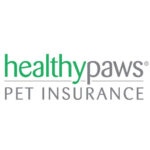Best Pet Insurance Plans For Havaneses For 2025
Based on my assessment, Healthy Paws delivers the best-tailored pet insurance for Havanese.
We’ve saved shoppers an average of $350 per year on their pet insurance.
Alarmingly, 80% of pet owners can’t manage an unexpected $500 veterinary expense. That’s where pet insurance steps in, providing financial support.
In this guide, we’ll review the top pet insurance options for Havanese, helping you find the plan that fits your needs. Like personal health insurance, pet coverage opens up better treatment possibilities while capping expenses.
Best Pet Insurance Companies For Havaneses, 2025
Different pet insurance companies that focus on Havanese aim to ensure your pet's health and provide financial support, but they also have distinct features. What works for one pet may not be ideal for another. Here are the top pet insurance choices for Havanese:



Compare The Best Pet Insurance Companies For Havaneses
Having assessed the top pet insurance options for Havanese as discussed earlier, it's clear that several well-regarded companies are competing for the leading spots. Each company also presents its own unique advantages. Here's a concise summary to provide you with a glimpse into each insurer.
| Overall Rating | Best For | Waiting Period | Reimbursement % | Benefit Limit | Get A Quote | |
|---|---|---|---|---|---|---|
| Healthy Paws |
|
Overall |
15 accident/illness |
70%, 80%, 90% |
Unlimited annual and lifetime |
Instant Quote |
| Lemonade |
|
Cheap |
2 days accident, 14 days illness |
70%, 80%, 90% |
$5,000 to $100,000 annually |
Instant Quote |
| Many Pets |
|
Puppies |
15 days accident/illness |
70% or 80% (Most States) |
Unlimited annual and lifetime |
Instant Quote |
| Pumpkin |
|
Older Dogs |
14 days accident/illness |
90% |
$10,000 , $20,000 or unlimited |
Instant Quote |
| Spot |
|
Multiple Pets |
14 days accident/illness |
70%, 80%, 90% |
$2,500 to unlimited |
Instant Quote |
Our Methodology
The ratings were determined by evaluating insurer websites, analyzing customer feedback, consulting other review platforms, and utilizing personal experiences with pet insurance.
Quotes Analyzed
Years Of Industry Experience
Brands Reviewed
Research Hours
Detailed Reviews Of The Best Havanese Insurance Companies
Best Overall
Key Statistics
Why We Like Them
⇅Healthy Paws emerges as the best option for pet insurance with no claim limits, no per-incident maximums, and no restrictions. Although it may require a higher investment, it offers peace of mind by eliminating tough choices tied to policy limits. The straightforward policy has no expensive extras, and you can visit any licensed vet. Filing claims is a breeze through their app or website, with most processed within two days.
Benefits & Drawbacks
⇅- Unlimited reimbursements each year and for the entirety of your life.
- Timely resolution of the majority of claims within 48 hours.
- Our refund policy covers 30 days
- Possibility of direct veterinarian fee payments. ✓
- Non-existence of a standard wellness coverage choice ✘
Runner-Up For Best Overall
Key Statistics
Why We Like Them
⇅Lemonade stands out as the most budget-friendly insurance for Havanese. Its coverage limits are similar to other providers, though they don’t match the unlimited coverage offered by Healthy Paws. Lemonade’s plans range from $5,000 to $100,000 per year, with premiums increasing as the coverage amount rises. Their standard policy covers accidents and illnesses, including cancer, heart disease, skin conditions, fractures, and hip dysplasia, which is common in older Havanese. However, like most insurers, Lemonade excludes preexisting conditions, dental problems, behavioral issues, and elective treatments.
Benefits & Drawbacks
⇅- Access and utilize a wellness benefit.
- Enjoy benefits with a short two-day waiting period after an accident.
- Combine your Lemonade home, renters, or car insurance with pet insurance and receive a 10% discount. ✓
- The pet telehealth service doesn't run non-stop.
- Veterinary consultation fees involve an extra charge.
- Unfortunately, prescription food and microchipping are not covered under this policy. ✘
Best For Puppies
Key Statistics
Why We Like Them
⇅ManyPets stands out for its puppy insurance, where pre-existing conditions don’t raise rates. Cured conditions may be covered after 18 months, and unrelated conditions can still be insured. Havanese puppies, with their boundless energy, are prone to accidents, poisoning, and swallowing foreign objects. Early coverage prevents future exclusions for pre-existing conditions as they grow older.
Benefits & Drawbacks
⇅- Available in an extensive array of states, more than 40 in number.
- Offers various wellness plan choices.
- Comprises veterinary examination fees for both illness and accident consultations. ✓
- There isn't a 24/7 hotline for pet health concerns.
- The coverage does not include pet behavior therapy.
- I regret to inform you that alternative therapies aren't covered. ✘
Best For Older Dogs
Key Statistics
Why We Like Them
⇅As Havanese age, they might experience genetic health problems like cruciate ligament tears and hip dysplasia, which can be costly to treat. Pumpkin covers these conditions without making you wait and also includes vet exam fees for senior Havanese. They offer various coverage plans for surgeries, dental care, and other health concerns. Pumpkin provides three deductible options and typically reimburses 90% of covered expenses.
Benefits & Drawbacks
⇅- Elect to enroll in an accessible wellness program.
- Take advantage of lower premiums for multiple pet coverage.
- Secure a substantial 90% reimbursement for dogs and cats aged 8 weeks or more. ✓
- Unfortunately, there isn't a 24/7 pet telehealth hotline.
- We regret to say that the options provided do not include an accident-only plan. ✘
Best For Multiple Pets
Key Statistics
Why We Like Them
⇅Havanese are often part of multi-pet households due to their friendly nature. Spot provides a 10% discount if you insure more than one pet, resulting in significant savings. Spot’s preventive care plan covers wellness visits, fecal tests, teeth cleanings, and select vaccinations. They also offer a 30-day money-back guarantee if you’re not happy with the coverage. With up to 90% reimbursement on eligible vet bills and a 24/7 helpline, you can consult any licensed vet in the U.S.
Benefits & Drawbacks
⇅- Includes microchip implant solutions.
- Allows for selecting a $100 deductible.
- Provides an always-open pet telehealth hotline. ✓
- Accidents involve a 14-day waiting period, as opposed to a 2-day waiting period with some leading competitors. ✘
Average Cost Of Pet Insurance For Havaneses
| Company | Deductible | Annual Reimbursement % | Monthly Price | Age Of Dog |
| Healthy Paws | $500 | 70% | $71.40 | 5 year old |
| Lemonade | $500 | 70% | $42.00 | 5 year old |
| Spot | $500 | 70% | $73.34 | 5 year old |
| Healthy Paws | $500 | 80% | $37.52 | 1 year old |
| Lemonade | $500 | 80% | $21.65 | 1 year old |
| Spot | $500 | 80% | $53.82 | 1 year old |
| Healthy Paws | $500 | 70% | $37.61 | 3 month old |
| Lemonade | $500 | 70% | $30.13 | 3 month old |
| Spot | $500 | 70% | $83.12 | 3 month old |
Common Health Issues For Havaneses
Havanese, as a purebred dog breed, are particularly susceptible to health issues related to their genetics. Sometimes, breeders haven’t taken these genetic concerns into account, leading to more widespread problems within the Havanese breed. Havanese are more prone to genetic disorders compared to other dog breeds. Below, we highlight some of the most common health issues they face:
- Cancer (Oral Melanoma, Mast Cell Tumors)
- Brachycephalic Obstructive Airway Syndrome (BOAS)
- Patellar Luxation
- Hip Dysplasia, Legg-Calvé-Perthes Disease
- Corneal Ulcers, Entropion, Dry Eye
- Skin Fold Dermatitis, Infections
How To Find The Best Pet Insurance Company For You
The costs and options available with pet insurance can vary significantly between providers, which makes choosing the right one a challenge. To ensure you select the best plan for your pet, consider these guidelines before making your decision:
Check Whether Your Pet Is Eligible
Insurance for young puppies and kittens generally requires them to be at least 6 to 10 weeks old, depending on the provider. Some companies may not allow first-time enrollment for senior pets or might restrict them to accident-only policies. Nevertheless, once enrolled, most plans provide lifelong coverage if premium payments are maintained.
Research What’s Covered
Most pet insurance plans typically handle expenses like surgery, hospitalization, and medications when your pet gets sick or injured. However, there are specific things that some companies might charge extra for or not cover at all. Here are a few examples:
- Exam fees: For instance, if your dog breaks a leg, some plans may cover necessary X-rays, surgery, and pain medications, but they might not pay for the veterinarian’s examination fee.
- Alternative treatments and rehab: Some plans include coverage for alternative treatments like acupuncture and physical therapy, while others might ask for an extra charge.
- Behavioral therapies: Many plans do not cover vet treatment for behavioral problems like aggression.
- Prescription food: Certain plans might exclude food or supplements, even if the vet prescribes them for a covered issue.
- Dental care: Pet insurance plans differ on dental health coverage. Some might not cover problems like gum disease or tooth issues. Additionally, coverage might depend on recent teeth cleaning. Some wellness add-ons may pay for cleanings. Keep in mind, pet insurance usually doesn’t cover pre-existing conditions, cosmetic procedures, or breeding costs.
Decide How Much Coverage You Want
Most pet insurance policies set an annual payout limit, but there are a few without such restrictions. It’s your job to choose an amount that makes you feel secure in handling potential vet bills. If your dog or cat is in good health, you may not need to spend beyond regular checkups for years. However, unanticipated surgeries or significant health problems can lead to bills that can quickly soar into the thousands.
Understand Reimbursements And Deductibles
In the pet insurance arena, most policies will reimburse you for part of your vet bills. When enrolling, you can typically choose a reimbursement percentage, like 70%, 80%, or 90%. Conversely, some plans stick to fixed fees for certain treatments, which might not cover the full costs incurred at your vet, meaning you’ll have to pay the difference yourself.
Almost every plan comes with a deductible, which is the initial amount you pay before the insurance covers any expenses. You usually have various deductible options, such as $100 or $250. Some plans may require a separate deductible for each health issue, while most only require one deductible payment per year.
Generally, if you select a lower deductible and higher reimbursement, your premiums will be higher, whereas a higher deductible and lower reimbursement will lead to lower premiums.
Check Waiting Periods
After purchasing an insurance plan, there’s typically a short waiting period, usually around 14 days, before full coverage for accidents and illnesses becomes active. During this initial period, treatments are not covered. Longer waiting periods may apply to certain conditions such as cruciate ligament injuries, which affect a dog’s knee stability and movement.
Examine Extra Costs
Certain pet insurance providers offer coverage for routine services such as check-ups and vaccinations. While this may seem attractive, it’s important to consider if the added cost is really worth it. Compare the yearly cost of the wellness insurance plan to what you typically spend for those services each year. Make sure to carefully review the specifics, as definitions of “wellness” may vary among pet insurance providers.
Compare Quotes
The price of pet insurance varies depending on the provider and the extent of coverage. Some pet insurance companies offer discounts for insuring multiple pets, potentially reducing costs. However, discounts alone don’t ensure the best choice. To find the most suitable pet insurance, it’s important to research and compare quotes from different plans. Make sure to conduct an unbiased comparison, considering coverage levels, deductibles, and reimbursement limits.
Average Cost Of Typical Vet Procedures
| Typical Vet Procedure | Average Cost Of Procedure |
| Puppy vaccinations | $75-100 |
| Flea & tick prevention | $40-200 |
| Heartworm prevention | $24-120 |
| Spay or neuter surgery | $200-800 |
| Annual exam | $240-600 |
| Teeth cleaning | $200-500 |
| Microchip | $40 |
Average Cost Of Emergency Vet Procedures
| Emergency Pet Procedure | Average Cost Of Procedure |
| General consultation/exam | $100-$150 |
| General bloodwork | $80-200 |
| X-rays | $150-$250 |
| Ultrasound | $300-$600 |
| 1-2 day hospitalization | $600-$1,700 |
| 3-5 day hospitalization | $1,500-$3,500 |
| Wound treatment & repair | $800-$1,500 |
| Emergency surgery | $800-$2,500 |
| Oxygen therapy | $500 |
Is Pet Insurance Worth It For Havaneses?
Pet insurance acts as a safety net for unexpected veterinary expenses. While many pet owners can manage their pet’s medical bills, a significant number of Americans find it challenging to pay a $1,500 emergency vet fee. The right insurance provides a financial cushion, enabling you to prioritize your pet’s well-being without worrying about costs.
The perceived value of pet insurance varies depending on your expectations. If your pet is receiving treatment for a chronic condition and you’re seeking help with those costs, you may feel let down since none of the companies in our review cover pre-existing conditions. However, understanding your policy, its coverage details, and ensuring it fits within your budget can lead you to see it as a worthwhile investment.
Factors That Impact Cost Of Your Pet Insurance Policy
Just like human health insurance, the cost of your pet insurance can be affected by several factors, including:
- Location: Pet insurance providers take into account the local costs of veterinary care when determining the price of your policy.
- Pet’s Age: Older pets often have a higher risk of health issues, leading to increased premiums.
- Pet’s Breed: Some breeds are more susceptible to certain health problems. For instance, bulldogs and Boston terriers commonly experience breathing difficulties, while Pugs are more likely to develop hip dysplasia. These potential health concerns can impact your insurance pricing.
- Deductibles, Coinsurance, and Coverage Limits: If you want to minimize out-of-pocket expenses for your pet’s care, your premiums will likely be higher. For example, a $100 deductible instead of a $500 one can result in faster reimbursements but will come with increased premiums.
FAQs
Is pet insurance cheaper for purebred dogs?
Purebred dogs, prone to genetic vulnerabilities and resulting expensive health issues, generally incur higher insurance costs than mixed-breed dogs.
What is the average cost of owning a Havanese?
Initially, the first-year costs total about $3,000, covering vaccinations, food, grooming, and insurance. Subsequently, annual expenses decrease to approximately $1,900.
What insurance do you need for a dog?
Dog owners should have pet insurance to cover veterinary expenses and ensure their dogs remain healthy.
Sources
⇅